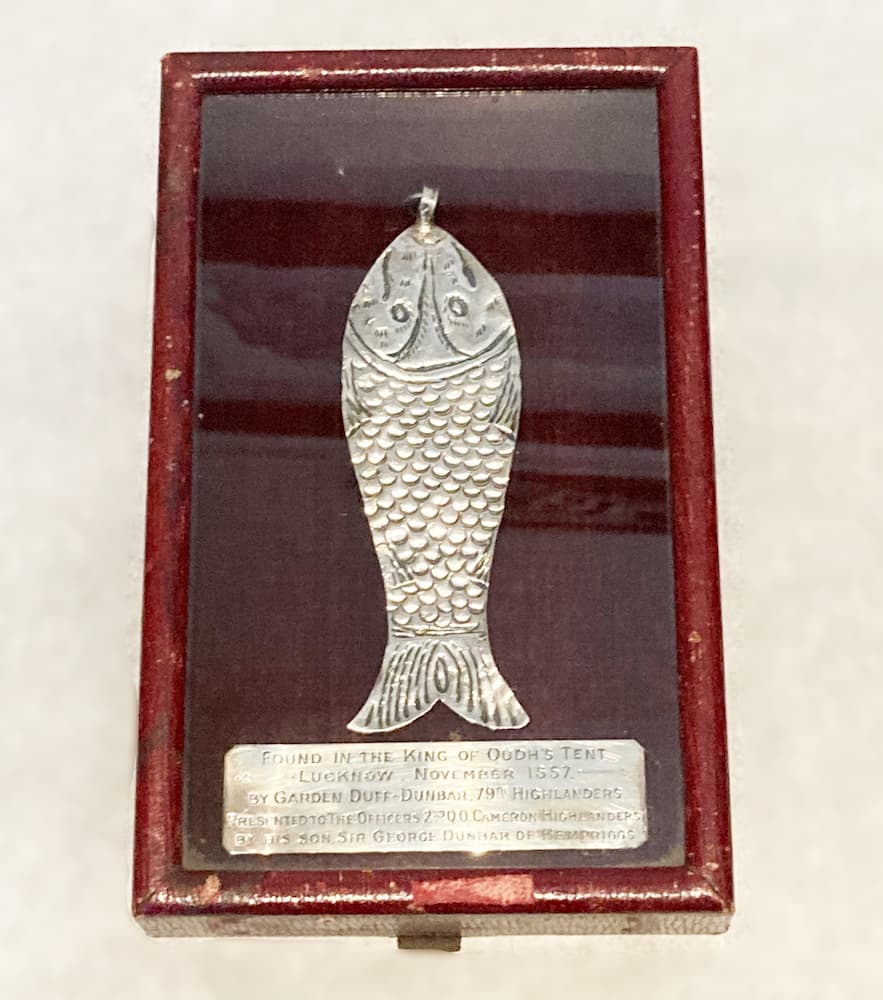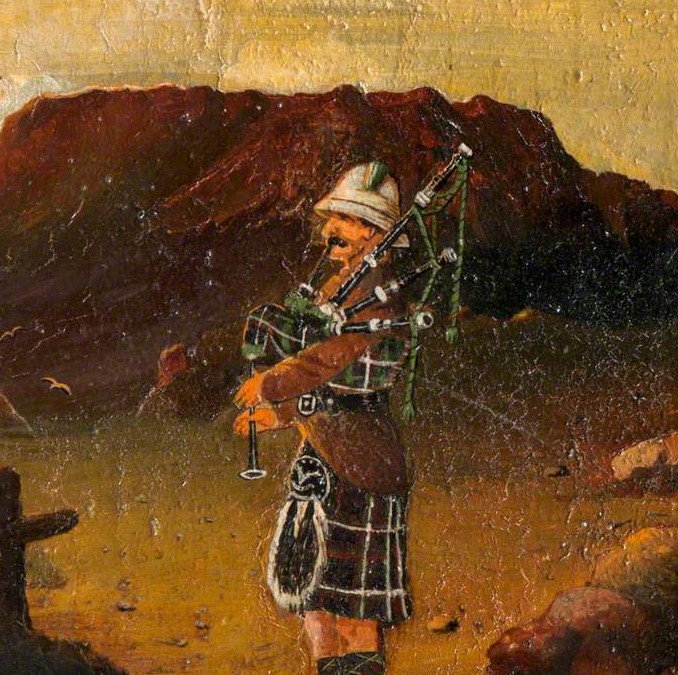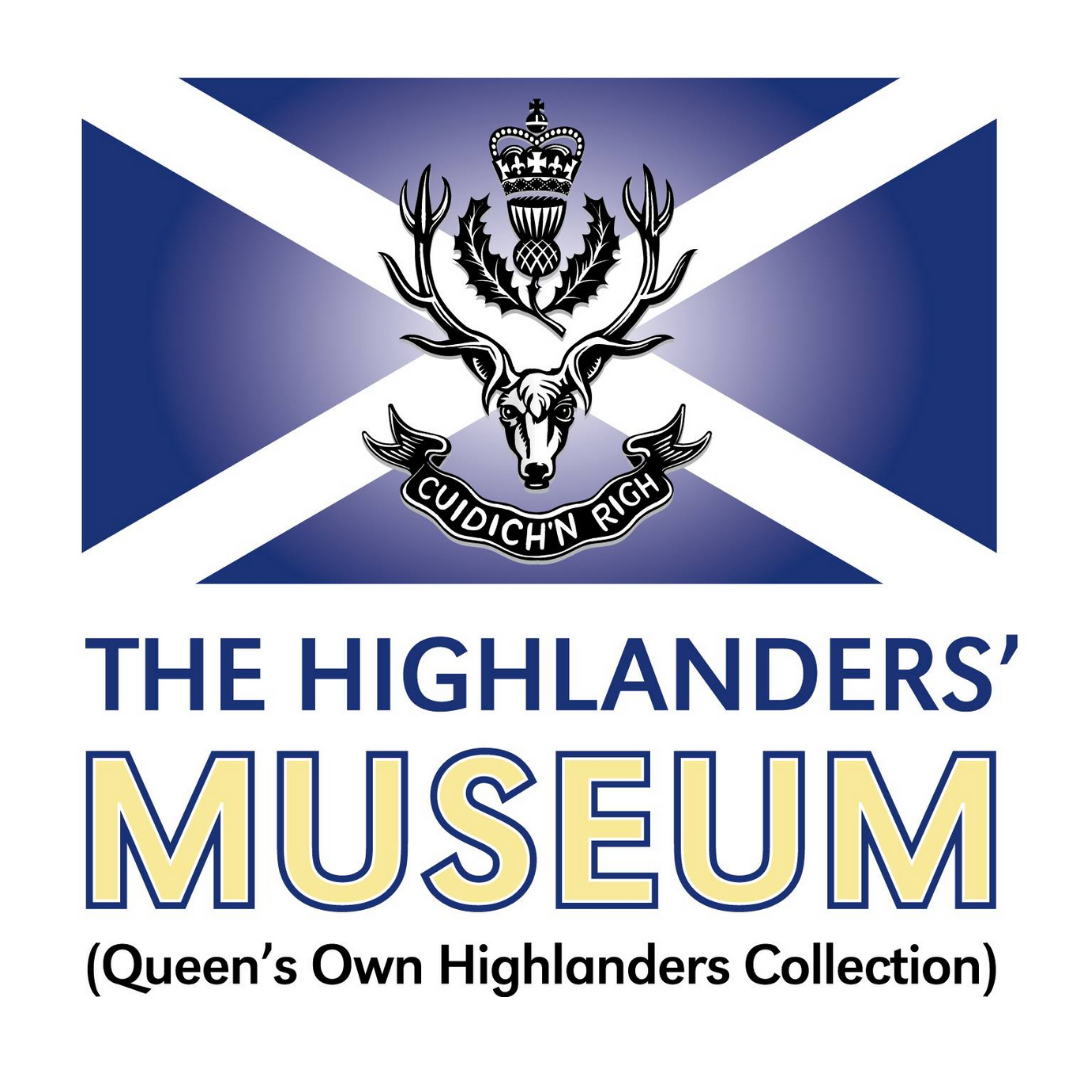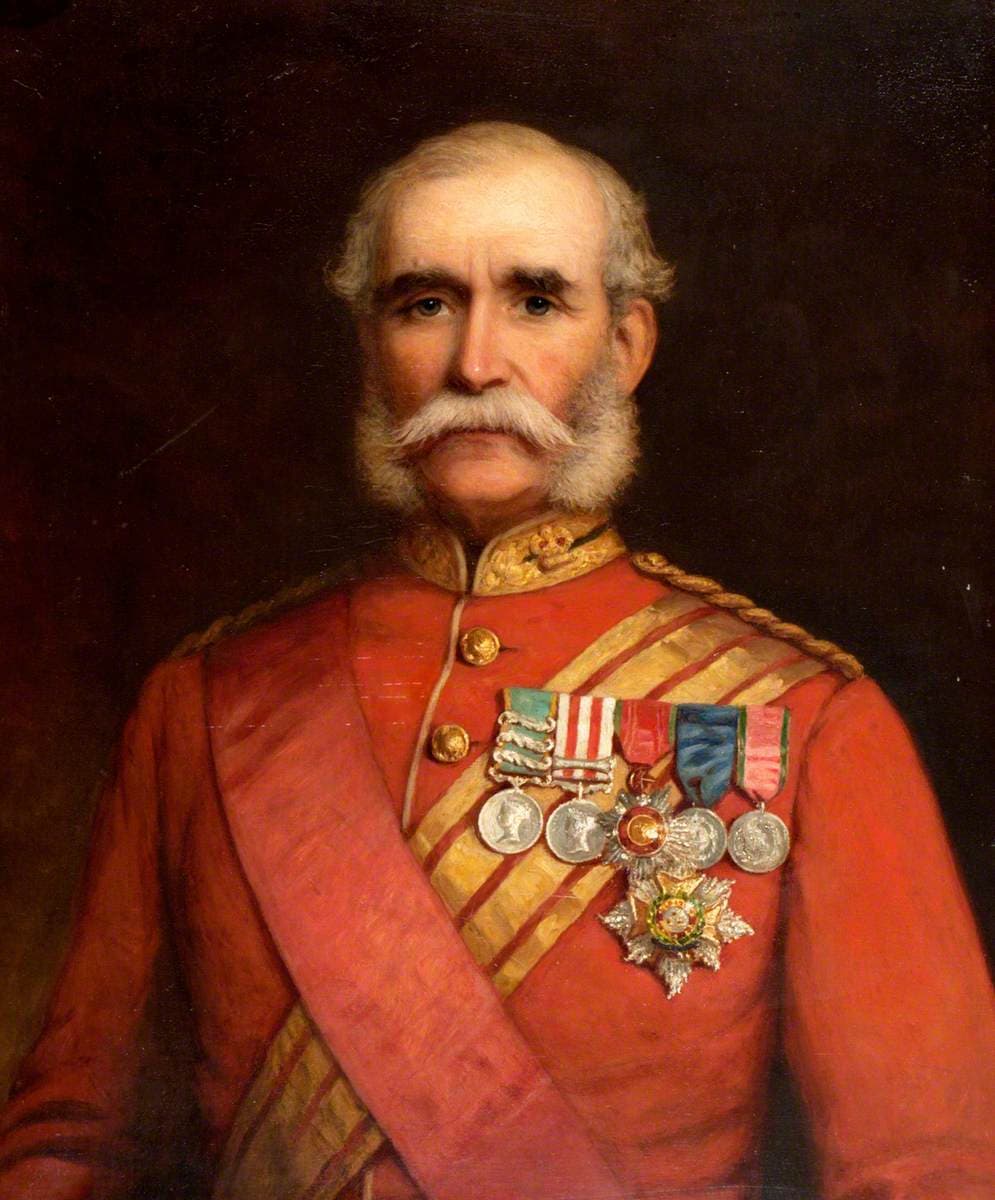THE
PERSON
BEHIND
THE PORTRAIT

BIRTH DATES
1817 – 1887

REGIMENT
79TH REGIMENT OF FOOT

ARTIST
UNKNOWN ARTIST
General Sir John Douglas of Glenfinart was born in 1817 in Bourges, central France. When he was born, his father, Lieutenant General Sir Neil Douglas, was 43 and his mother, Barbara Robertson, was just 16. Joining the military in 1833, Douglas was stationed in Glasgow and Dublin until 1840, and in Gibraltar from 1841 – 1848. During this period, he married Lady Elizabeth Cathcart on the 1st June 1843, and they had two surviving sons.
Towards the end of 1848, the regiment sailed for Canda where Douglas would have stayed before a returning for a brief period in Britain, and the subsequent Crimean War which began in 1854. Douglas commanded the 79th Regiment of Foot throughout the Crimean War, notably at the Battle of Alma, the Battle of Balaclava, and at the Siege of Sebastopol. The Indian Uprising broke out in 1857, and Douglas and the 79th remained in India until 1871. Douglas was Colonel of The Queen’s Own Cameron Highlanders from 1879 – 1887, and was promoted to full General on the 30th January 1880. He died on the 8th September 1887, aged 71.
Throughout his career, he earned the following medals: GCB, Indian Mutiny Medal with Lucknow Clasp, Crimean Medal with Alma, Balaclava, and Sevastopol Clasps, Sardinian Crimea Medal (for Valour), Order of Medjidie Medal (Turkish – 4th Class), and the Turkish Crimea Medal.
THE
PERSON
BEHIND
THE PORTRAIT
THE
PERSON
BEHIND
THE PORTRAIT
General Sir John Douglas of Glenfinart was born in 1817 in Bourges, central France. When he was born, his father, Lieutenant General Sir Neil Douglas, was 43 and his mother, Barbara Robertson, was just 16. Joining the military in 1833, Douglas was stationed in Glasgow and Dublin until 1840, and in Gibraltar from 1841 – 1848. During this period, he married Lady Elizabeth Cathcart on the 1st June 1843, and they had two surviving sons.
Towards the end of 1848, the regiment sailed for Canda where Douglas would have stayed before a returning for a brief period in Britain, and the subsequent Crimean War which began in 1854. Douglas commanded the 79th Regiment of Foot throughout the Crimean War, notably at the Battle of Alma, the Battle of Balaclava, and at the Siege of Sebastopol. The Indian Uprising broke out in 1857, and Douglas and the 79th remained in India until 1871. Douglas was Colonel of The Queen’s Own Cameron Highlanders from 1879 – 1887, and was promoted to full General on the 30th January 1880. He died on the 8th September 1887, aged 71.
Throughout his career, he earned the following medals: GCB, Indian Mutiny Medal with Lucknow Clasp, Crimean Medal with Alma, Balaclava, and Sevastopol Clasps, Sardinian Crimea Medal (for Valour), Order of Medjidie Medal (Turkish – 4th Class), and the Turkish Crimea Medal.
INSIDE
THE MUSEUM
Douglas was Colonel of The Queen’s Own Cameron Highlanders during the Indian Uprising of 1857 – 1858. This silver pendant was taken by a Highlander from the King of Oudha’s tent after the fall of Lucknow in 1858. This war trophy is an example of looting, which was common practice particularly during the colonial period; it was not prohibited by international law until 1949.
TAKE A CLOSER LOOK...

WHOSE STORY WILL YOU DISCOVER NEXT..?



